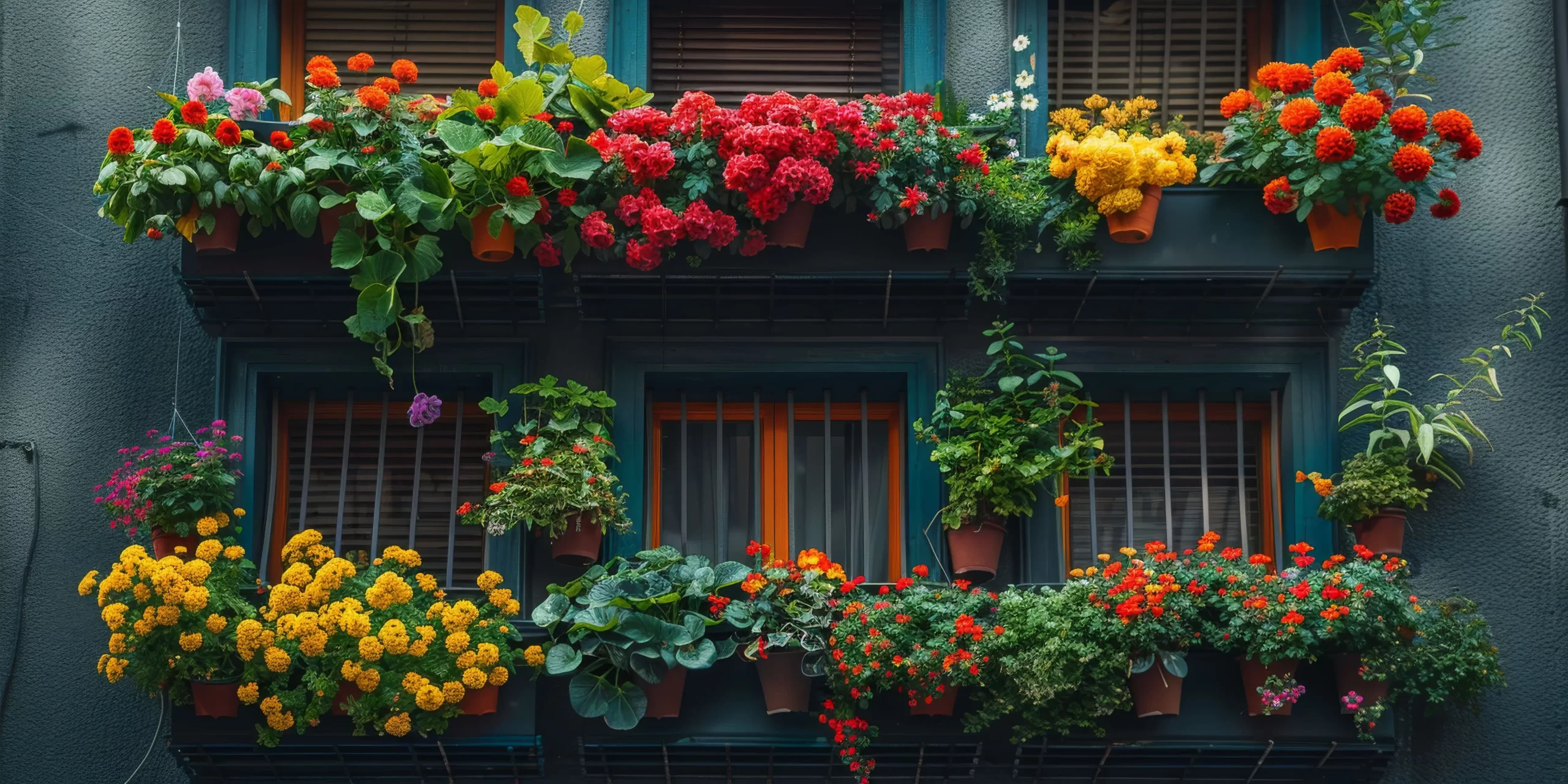
Small space gardening – Detailed Guide and Tips
If you live in a small apartment or a condo with limited outdoor space, container gardening is an excellent way to create your own green oasis. Container gardening allows you to maximize the potential of your balcony, patio, or even your window sill. With some creativity and planning, you can grow various plants in a confined space, including flowers, vegetables, and herbs. Here are a few helpful tips to get you started:
Choose the right containers: The containers you choose for your garden will significantly impact your plants’ growth. Ensure that your containers have adequate drainage holes to prevent waterlogging, which can lead to root rot. Additionally, consider the size of the containers; larger containers are suitable for bigger plants, while smaller containers work well for herbs and small flowers. Remember, the material of the container, such as plastic, ceramic, or terracotta, also affects the plants’ health. Each material has pros and cons, so choose according to your needs and preferences.
Consider vertical gardening: Vertical gardening is a game-changer in a small space. Utilize vertical space by mounting planters on walls, using hanging baskets, or installing a trellis for climbing plants. Vertical gardening not only saves space but also adds an aesthetic appeal to your balcony or patio.
Optimize sunlight exposure: Most plants need adequate sunlight to thrive. Observe the sunlight patterns on your balcony or patio to determine the best container spot. If your space is shaded, opt for shade-tolerant plants. Conversely, if you have a sunny spot, choose sun-loving plants.
Maximize space with multi-functional furniture: Use furniture that doubles as planters. Consider benches with built-in planters or tables with a central container. This approach saves space and adds a unique charm to your garden.
Be mindful of weight: When gardening on a balcony, consider the weight of the containers, soil, and plants. Heavy containers may exceed the balcony’s load-bearing capacity. Opt for lightweight materials like plastic or fabric pots and ensure that your balcony can safely support the weight of your garden.
Best soil for container gardening – Detailed Guide and Tips
The success of your container garden largely depends on the soil quality you use. Unlike traditional ground gardening, container gardening requires a specific type of soil that meets the unique needs of potted plants. Here are some essential tips for choosing the best soil for container gardening:
Use high-quality potting mix: A high-quality potting mix is fundamental for container gardening. Unlike garden soil, potting mix is specially formulated to provide adequate drainage, aeration, and nutrients to potted plants. Choose a mix that includes vermiculite, peat moss, and perlite. These ingredients maintain moisture retention while ensuring proper drainage.
Avoid using garden soil in containers. Garden soil can be too dense, leading to poor drainage and compaction. It may also contain pests, diseases, and weed seeds that can harm your plants.
Add organic matter: Organic matter, such as compost or well-rotted manure, enriches the potting mix with essential nutrients. It improves soil structure and moisture retention and promotes healthy microbial activity. Mix organic matter into your potting mix to boost plant growth and productivity.
Monitor soil moisture levels: Container plants require more frequent watering than ground plants, as the soil in containers tends to dry out faster. Ensure that your potting mix retains moisture without becoming waterlogged. Coarse materials like perlite and bark chips help improve drainage, while peat moss and coconut coir enhance moisture retention.
Replenish nutrients regularly: Potted plants deplete soil nutrients over time, so it’s essential to replenish them regularly. Use a balanced liquid fertilizer or slow-release granular fertilizer according to the plant’s needs. Be sure to follow the instructions on the fertilizer packaging to prevent over-fertilizing, as this can damage your plants.
Best plants for containers – Detailed Guide and Tips
Choosing the right plants for your container garden is crucial for a thriving balcony oasis. Some plants are better suited for containers due to their size, growth habits, and adaptability. Here are some of the best plants to consider for container gardening:
Herbs: Herbs are perfect for containers as they are compact and easy to grow. Popular choices include basil, mint, thyme, rosemary, parsley, and chives. They add fresh flavors to your cooking and can thrive in small pots on your balcony.
Vegetables: Many vegetables grow well in containers, making them a great addition to your balcony garden. Consider growing tomatoes, peppers, lettuce, spinach, radishes, and carrots. Choose dwarf or bush varieties that are suitable for small spaces.
Flowers: Brighten up your balcony with a variety of flowering plants. Marigolds, petunias, geraniums, pansies, and begonias are excellent choices for container gardening. These flowers add vibrant colors and fragrance to your space.
Succulents and cacti: Succulents and cacti are ideal for container gardening, especially if you’re looking for low-maintenance plants. They require minimal watering and can thrive in small pots. Popular varieties include aloe vera, echeveria, sedum, and jade plant.
Climbing plants: If you have limited floor space, consider growing climbing plants in containers. Plants like ivy, clematis, and morning glory can be trained to grow vertically on a trellis or wall, adding greenery without taking up much space.
Additional Tips for a Thriving Container Garden
Beyond selecting the right plants and soil, several other factors contribute to the success of your container garden. Here are some additional tips to ensure your balcony oasis thrives:
Regular maintenance: Prune, deadhead, and remove spent flowers regularly to encourage new growth and keep your plants healthy. Check for pests and diseases and take prompt action if any issues arise.
Proper watering: Water your container plants consistently but avoid overwatering. The frequency of watering depends on the type of plant, weather conditions, and container size. Regularly monitor the soil moisture and water when the top inch of soil feels dry to the touch.
Provide adequate light: Ensure your plants receive the right amount of sunlight. Some plants thrive in full sun, while others prefer partial shade. Observe your plants and adjust their positioning based on their light requirements.
Seasonal adjustments: Your container garden may need adjustments as the seasons change. Move sensitive plants indoors during extreme weather conditions, and rotate your containers to ensure even growth.
Experiment and have fun: Container gardening is a creative and enjoyable endeavor. Don’t be afraid to experiment with different plant combinations, container arrangements, and gardening techniques. Have fun creating your own unique balcony oasis!

